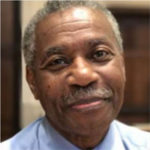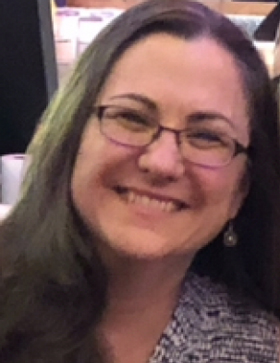by Jeanne Preisler •
My niece was born when I was 12. I remember whispering in her ear that I would always take care of her. It is a promise I try to keep even today, nearly 40 years later.
My mother served as her primary caregiver on and off for most of my teenage years. I remember playing baby doll and teaching her the alphabet on an old chalkboard. I remember driving her to daycare on my way to high school, looking in the rearview mirror as we sang “Five Little Speckled Frogs” at the top of our lungs.
I was 26, working a temporary job, and barely making ends meet when I started raising my niece. I think I was in shock for the first couple months.
As with many kinship placements, there were pockets of time when my niece lived with her biological parent(s). My mother and I hoped for the best each time, but we also prepared for her return if necessary. The fact that my brother couldn’t raise his daughter broke his heart. I never once doubted his love for her. But addiction and bad choices put him on a path that prevented him from being her parent. My brother keeps a picture of her with him at all times and he and I know that she is “his” daughter.
But she is also my daughter. She came to live with me full time when she was 14. And, for a while, she called me “Aunt Jeanne.” I don’t remember the first time she called me “Mom,” but I have been “Mom” for almost two decades now. She has grown into a remarkable woman and is now a mother herself—a beautiful one at that. I find great joy in watching her raise her daughter, my granddaughter.
Navigating Family Dynamics
I am one of millions of people in the nation who have raised family members—grandchildren, nieces, nephews, cousins, siblings. Many more raise children who are not related by blood, but “kin” nonetheless. We are an army of caregivers who, out of love and hope for the future, do what needs to be done. It is a difficult journey at times. We grieve for what could have been for ourselves, for our loved ones, for those we are raising. Also, we must forever navigate complex emotions, shifting roles, and challenging family dynamics.
For me, this meant not only working through my relationship with my brother, but also navigating a contentious relationship with my former sister-in-law while balancing the feelings of my mother (who felt guilty) and my friends (who discouraged me from taking on such a big responsibility).
Most kinship caregivers don’t have advance notice that they will be needed. Often, the phone rings, there is a crisis of some kind, and you have a young person with you that night. Lives are turned sideways in a flash. Everything is complicated by pre-existing family relationships. Additionally, kinship caregivers often have no training and no financial support. At the time I got my phone call, I was 26 years old, working a temporary job, and barely making ends meet. I think I was in shock for the first couple months.
Overnight it seemed, I changed from being “cool” Aunt Jeanne to an authority figure who had to reprimand poor choices. I was hyper-vigilant for any behavior I thought would lead her down the same path as her biological parents. I didn’t know anything about “strategic sharing” back then; while I was embarrassed to talk about my brother’s situation, I felt I had to share when people asked why I was raising my niece, which was emotionally draining. These emotions were mixed with all the positive, proud moments, which further complicated my experience.
I didn’t know how important my own wellness was to raising a child. In hindsight, I should have immediately started therapy to better equip myself for the emotional roller coaster I was on.
Complex emotions are particularly frequent among kinship caregivers. You might blame the relative whose child you are raising—whether they are incarcerated, have died, or are otherwise not able to raise their child. You might harbor anger at the youth’s ungratefulness. You might experience shock and profound worry at behaviors you see in your kin or the child you are raising. You might feel resentfulness and just want your life back.
Two Key Questions

Dr. Joseph Crumbley has a training series where he asks kinship caregivers to ask themselves two questions: (1) “Should I and can I be a caregiver?” and (2) “Should I and can I continue to be a caregiver?” (AECF, 2017). These are important questions, even if you feel you have no choice but to be the caregiver. Given emerging adults are now leaving home around age 25, consider how old you will be when they turn 25. To step up when a crisis happens is one thing; to continue to be the caregiver long-term is quite another. We must prepare ourselves in case the journey is longer than we initially thought. (Click here for more from Dr. Crumbley.)
I had to ask myself the second question again recently. My daughter and grandchild are living with me, and while I am no longer the primary caregiver, it is still an applicable question. Should I and can I continue to be a caregiver? My daughter and I have had difficult conversations about my ability and willingness to continue to provide such support.
Reflect and Talk about What Hurts
What hurt might you and your child be experiencing today that you need to talk about? (I am a big fan of the “Name It To Tame It” principle.)
From the child or youth’s perspective, it hurts to be different than other families. It hurts that they are not with their mom or dad. It hurts that they may be separated from siblings, from friends, from pets. It hurts to think (erroneously) that they caused their parent’s crisis. It hurts to fear for your parents’ safety and well-being.
From the caregiver’s perspective, it hurts to carry resentment for what “could have been.” It hurts to worry about money, about parenting skills, about school issues. It hurts not to be able to do the things with your friends you used to do. It hurts to fear for your relatives’ safety and well-being.
Talking about what hurts us is hard. However, talking about grief and loss issues can help the healing process, build trust, and support attachment. In his 2013 book Brainstorm: The Power and Purpose of the Teenage Brain, Dr. Daniel Siegel suggests some helpful ways for us to reflect on attachment. Here are some questions you and your child or youth can discuss together. While these are framed from the youth’s perspective, kinship caregivers can reflect on them as well, given they also know the youth’s parents.
- What is your relationship like now with your parents?
- Why do you think your parents act (acted) the way they do (did)?
- Do you try to not do things because of how your parents treat (treated) you?
- As you reflect on all of these experiences, how do you think they influence the ways you related to other people?
- How do you feel all of these things we have been exploring have influenced who you are now and how you have come to be the way you are?
Introspection and self-reflection on all of these complex emotions may be the strongest tool in the kinship caregiver’s toolbox. Healing begins when we have both the courage to tolerate discomfort and a deep willingness to feel. Be brave my fellow kinship caregivers, be brave.
Jeanne Preisler works for the Center for Family and Community Engagement at NC State University as an Engagement Specialist.
For references cited in this issue, click here.


